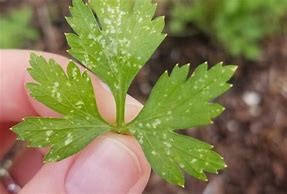“Parsley — the jewel of herbs, both in the pot and on the plate” — Albert Stockli.
Parsley is widely used as a culinary herb. While often seen as merely a visual garnish, it’s also labeled as one of the most powerful disease-fighting plants. It provides great nutritional value and many potential health benefits.
The two most common cultivars of parsley in the garden are:
- Curly leaf parsley, used mainly as a garnish


- Flat leaf or Italian parsley. This is more often used for cooking as it has a deeper flavor and is easier to handle on the cutting board.


Benefits and nutritional information:
- A 1/2 cup of fresh, chopped parsley provides Vitamin A: 108% of the Reference Daily Intake (RDI) of Vitamin A, 53% if the Vitamin C, 547% of Vitamin K, and 11% of Folate (Vitamin B9).
- Parsley is also high in antioxidants
Starting
- Parsley is easy to grow, either from seeds or from nursery starts.
- If planting from seeds, sow them 1/4” deep, spaced 4 to 6 inches apart in rows 12 to 18 inches apart.
- The germination rate of seeds is low, so seeds should be soaked overnight before planting to increase success.
- If transplanting parsley, take extra care of the taproot since it is quite delicate.
When to plant:
- Parsley lends itself well to growing indoors and therefore can be planted year around.
- When planting outdoors, the soil temperature should be around 70 degrees, although it will germinate at a lower temperature.
Thinning, training:
- Space parsley plants 6 to 8 inches apart.
Signs of overwatering, nutrient deficiency:
- Crown rot and root rot are associated with soggy soil.
- If the soil is well drained and not overly wet, this could be an insect problem.
Pests and pest controls:
Harvesting
- Parsley is ready to begin picking after 70 days of growth.
- Since it is a biennial, it will continue to produce for a second year if properly protected during winter.
- Just as with other herbs, parsley likes to be snipped, which encourages additional growth.
- Bunch the stems and leaves together and snip them off at ground level with kitchen shears.
- If you just cut the leafy tops and leave the stems, the plant will be less productive.
- When parsley begins to bolt during its second season of growth, it’s time to discard it since the leaves will begin to turn bitter.

